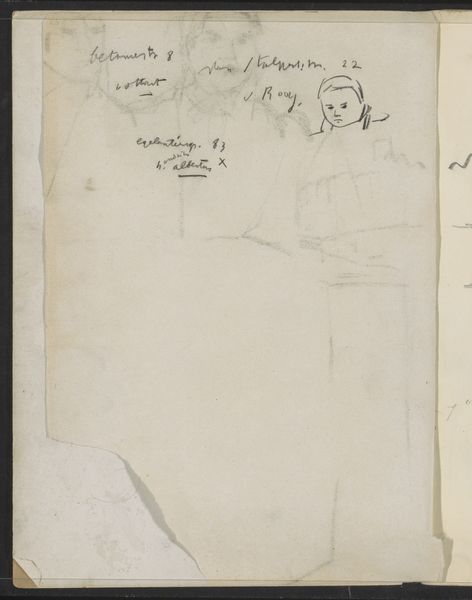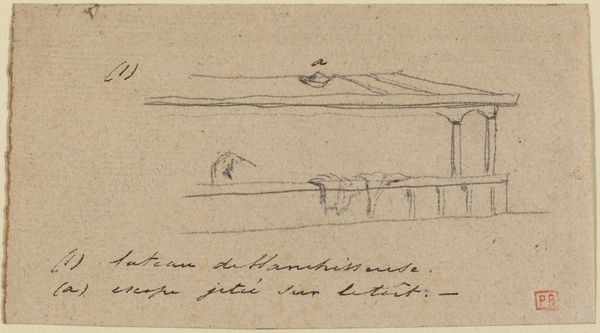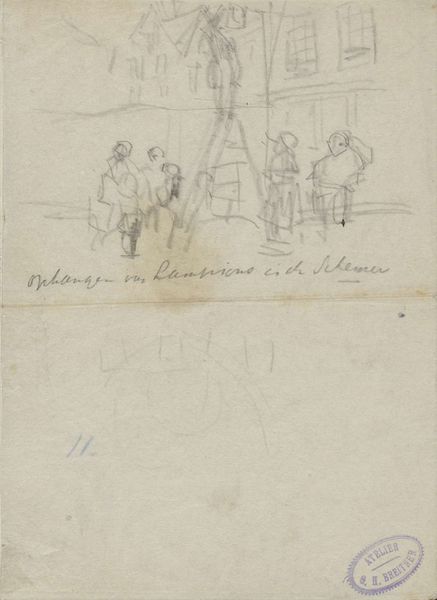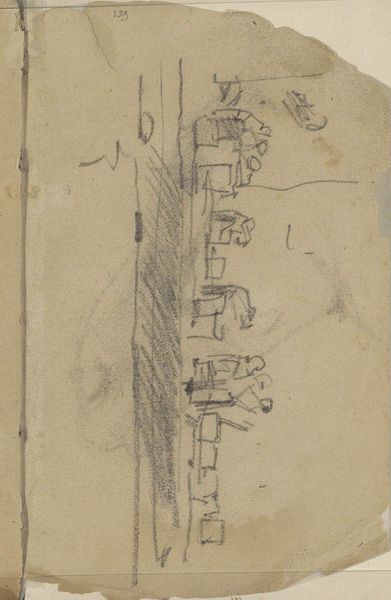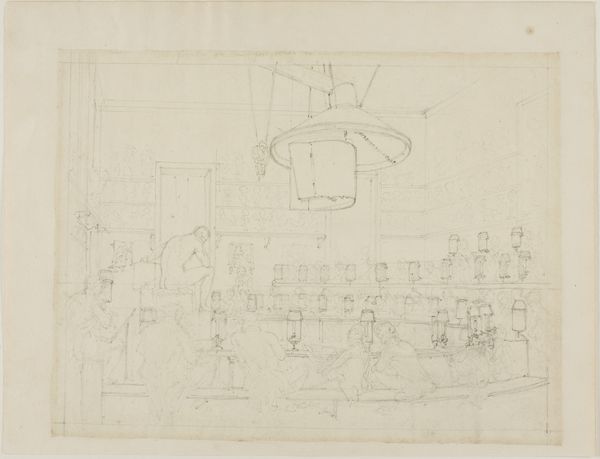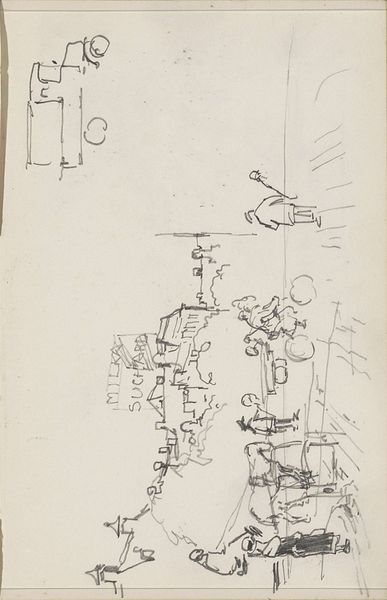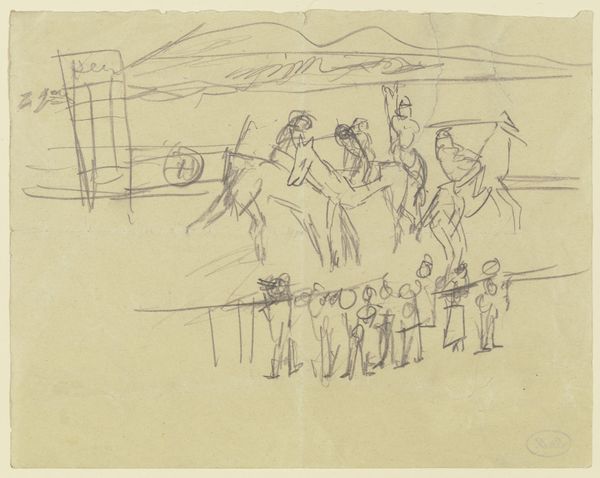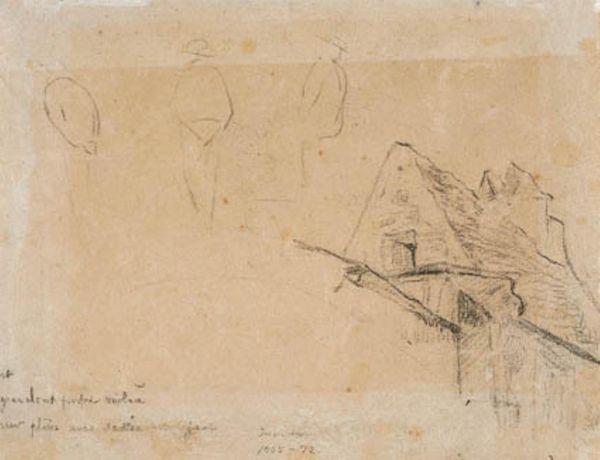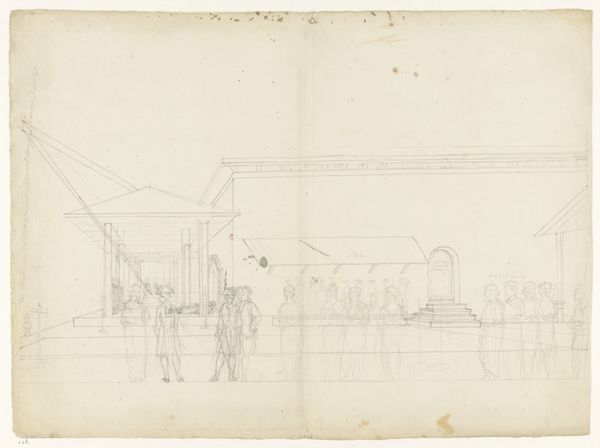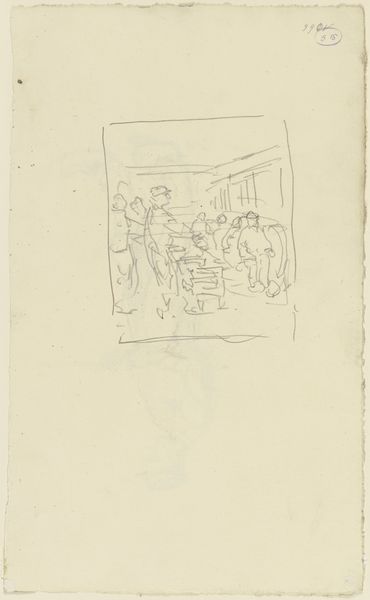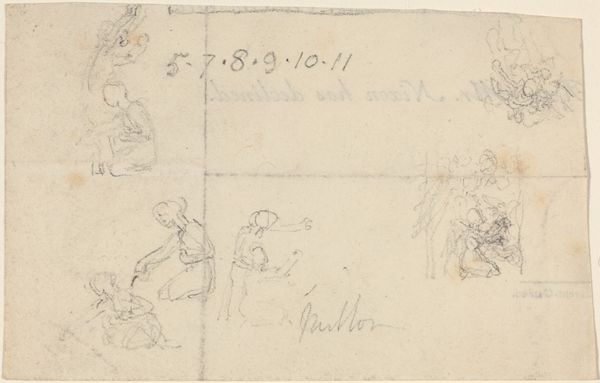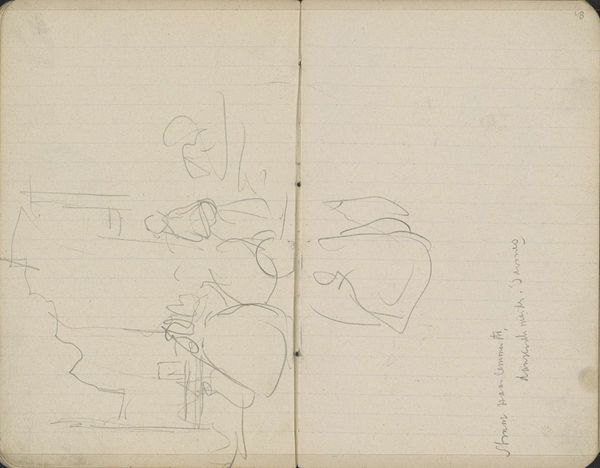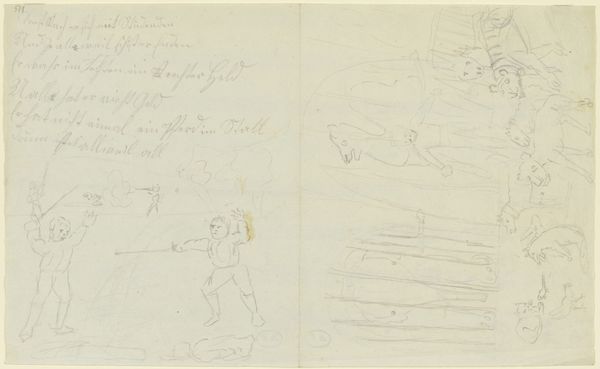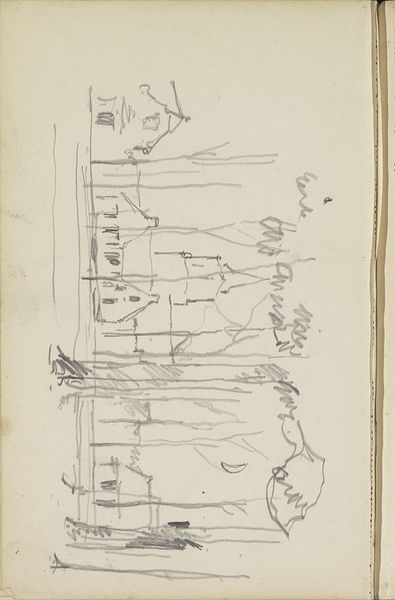
drawing, paper, pencil
#
portrait
#
drawing
#
16_19th-century
#
figuration
#
paper
#
german
#
idea generation sketch
#
sketchwork
#
romanticism
#
pencil
#
sketchbook drawing
#
genre-painting
Copyright: Public Domain
Editor: So, here we have Franz Pforr’s "Kinder an einer Tafel; Kutsche," or "Children at a Table; Carriage," created sometime between 1791 and 1803, using pencil on paper. It's a fairly light sketch. I'm struck by the contrast between the lively scene of children and the seemingly abandoned carriage... what resonates most with you in this piece? Curator: The sketch, almost like a palimpsest, reveals layers of cultural memory. The children at the table evoke a sense of shared experience, ritual even. Think of the table as an altar, the gathering as communion. The carriage on the other hand... what could that signify? Is it a departure? A journey interrupted? Notice the fragility of the lines. Editor: An interrupted journey… that makes me think about Romanticism's focus on the fleeting nature of childhood and innocence. The stark difference in rendering between the two scenes, though, strikes me as peculiar. Curator: Precisely. Pforr layers visual language. The table scene, brimming with gesture and animation, embodies a certain 'presentness'. The carriage, more schematic, represents something outside that sphere - perhaps the adult world or a future unknown. Consider how Pforr uses the sketch format itself – a medium traditionally associated with transience. What could the ephemeral nature of pencil on paper be suggesting? Editor: So the unfinished quality, in itself, adds to that feeling of transience, almost as if childhood, like the drawing, is always in progress? Curator: Exactly. We see not just images, but ideas in formation. By juxtaposing these sketches, Pforr invites us to contemplate the journey from that childlike innocence to the world represented by the carriage. And to wonder, perhaps, at what is lost along the way. Editor: It really reframes how I initially saw the sketch. The pairing of the two is what makes the piece, then. I see it now as a poignant commentary, even if it is just a quick sketch! Curator: And that's the power of symbols. Even in the faintest lines, cultural memory speaks.
Comments
No comments
Be the first to comment and join the conversation on the ultimate creative platform.
